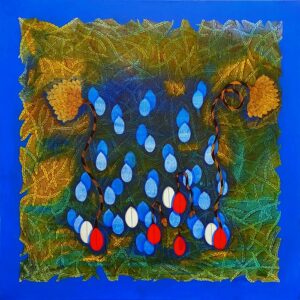Landscape art serves as a portal to the very essence of nature’s spirit, guiding us on a profound voyage into the heart of tranquility. Its purpose lies in encapsulating the profound beauty of the natural world. It extends an invitation to delve into serene landscapes and embrace the serenity that courses through the earth, heavens, and water. To truly grasp the core of landscape paintings, we embark on a journey of exploration, venturing through its historical origins, artistic techniques, and the emotional tapestry it weaves.
History of Landscape Paintings
To fully appreciate the essence of landscape paintings, it’s essential to delve into its rich history. The origins of this artistic tradition can be traced back to ancient civilizations, where landscapes played a significant role as backdrops for mythological and religious depictions. However, it was during the 17th century in Europe that landscape art truly blossomed into its distinct genre.
The Dutch Golden Age painters, such as Jacob van Ruisdael and Meindert Hobbema, excelled in capturing the pastoral beauty of the Netherlands. Their meticulous attention to detail and masterful use of light created landscapes that felt like windows into a peaceful countryside. These early pioneers set the stage for landscape painting’s evolution, which would later sweep across the globe.
Landscape Painting Techniques That Transcend Time
What distinguishes landscape art is its remarkable ability to whisk us away to locales we might never personally explore. This feat is accomplished through the adept application of techniques that craft an impression of depth and perspective. Artists employ a diverse array of approaches to accomplish this, including the meticulous manipulation of color, light, and composition.
- Light & Shadow
One of the most captivating elements found in beautiful landscape paintings lies in the way light and shadow interact. The dance between sunlight and shadow possesses the extraordinary ability to elevate an unassuming scene into a truly awe-inspiring masterpiece. It’s as if the artist has harnessed the very essence of tranquility and infused it into the canvas.
- Color
The use of color is another crucial aspect. The selection of a color palette has the remarkable ability to elicit various emotions and sensations. For instance, opting for warm, earthy tones can evoke feelings of coziness and familiarity, whereas cooler, subdued hues tend to convey a more contemplative and reflective mood. It’s important to note that the colors an artist chooses reflect their interpretation of the essence of the landscape they’re portraying.
- Composition
Composition is the artist’s way of guiding our gaze and inviting us to explore the painting. Elements like leading lines, focal points, and framing devices draw us into the scene, allowing us to lose ourselves in its beauty. It’s like stepping into a portal that leads to a world of tranquility.
Landscape Painting: Emotions That Speak Volumes
As we fix our gaze upon a landscape painting, it’s not uncommon for a wave of emotions to wash over us. It feels almost as though the canvas becomes a reflection of our innermost world, revealing our aspirations, anxieties, and yearnings.
Landscape paintings often stir within us a prevailing emotion – a profound feeling of serenity. Whether it’s the gentle ripples on a calm lake, the gentle warmth of a setting sun, or the serene grandeur of a mountain range, they all possess the power to soothe the spirit. These images gently nudge us, reminding us of the beauty and tranquility that persist in the world, even amid its relentless chaos.
Landscape art can also stir a sense of nostalgia. It can transport us back to moments in our own lives when we felt a similar sense of wonder and awe. Maybe it’s the recollection of a childhood adventure in the woods or the cherished memory of a romantic sunset spent with a beloved companion. These artworks help to bridge the gaps in our personal stories, gently prompting us to reminisce about the simple pleasures that bring us happiness.
Conversely, landscape paintings have the power to stir up feelings of longing and melancholy. Occasionally, the sheer beauty of a scene can carry a hint of sadness, prompting us to ponder distant places we’ve never visited or experiences we’ve yet to embrace. It serves as a poignant reminder that this world is brimming with uncharted territory and adventures waiting to be discovered.
The Power of Perspective
The true magic of landscape paintings lies in their power to transform our viewpoint. They nudge us to ease our pace, draw in a deep breath, and embrace the beauty of our surroundings. In a world that perpetually rushes from one obligation to the next, landscape art provides a precious moment of solace.
When we engross ourselves in a landscape painting, we shift from being active participants to becoming serene observers. It’s a liberating experience, as it grants us the freedom to release our concerns and anxieties, permitting us to embrace the present moment fully. In this manner, landscape paintings function as a kind of meditation, providing us with a path to discover inner peace within ourselves.
Wrapping Up
As we explore the essence of landscape paintings, we are reminded of their timeless ability to transport us to a realm of tranquility. Through its rich history, masterful techniques, and evocative emotions, landscape art offers a sanctuary for the weary soul. It serves as a poignant reminder that, even amidst the hustle and bustle of life’s chaos, there lies beauty, serenity, and a profound sense of peace patiently waiting to be unearthed.










